
In 1910, when the Studebaker Brother's company of South Bend, Indiana was a mere 58 years old, the decision was made to establish a Studebaker manufacturing plant in Canada. This new factory came at a time when the transition from wagons and buggies to electric and gas motor propelled vehicles was taking place. The large facility was located in Walkerville, Ontario now known as Windsor, just across the river from Detroit. This location was very convenient for shipping parts and equipment from South Bend. The Studebaker Brothers started manufacturing the E.M.F. at Walkerville and the plant became known as "The E.M.F." Company of Canada. This new Canadian Company grew and prospered over the years.
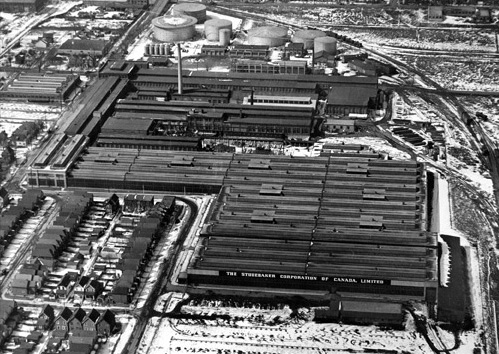
Aerial View of the Plant 1948
However, this prosperity took a sudden decline when the great depression hit. Although vehicle construction came to a standstill, the company did maintain a staff of maintenance and service personnel and the many dealerships across Canada were thusly supported. In order to satisfy these dealerships some finished cars were imported to the Canadian plant from South Bend and from there, to the dealerships. Around 1938 the company once again contemplated building cars in Canada. The 1939 Champion considered to be a compact car compared to the other products available, was quickly gaining popularity. Once again plans were curtailed because of WW II.
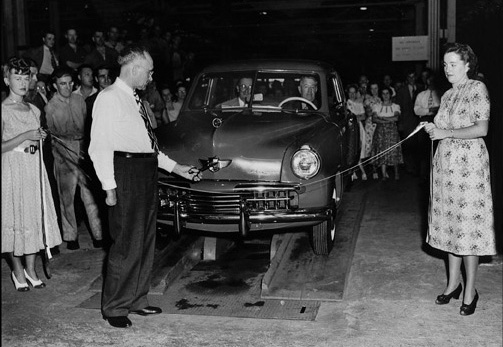
The First Car Off the Line in 1948
In 1941 the Canadian Government built a large complex covering 71/2 acres in Hamilton, Ontario to be used for manufacturing Bofors anti-aircraft guns for the war effort. In 1946, this large facility was purchased by The Studebaker Company from the Canadian Government. There was additional acreage around the buildings that would allow for future expansion if the vehicle manufacturer so required. In August of 1948 the first Studebaker rolled off the "new" assembly line. Hamilton was already a large industrial city. With two large steel companies and many other name brand companies, Hamilton, considered to be Canada's industrial center welcomed Studebaker to the fold. The plant location was perfect with railway, road and the Hamilton harbor just blocks away. Over the years there had been other automobile manufactures in Hamilton, but none that had the business track record and name that Studebaker had.
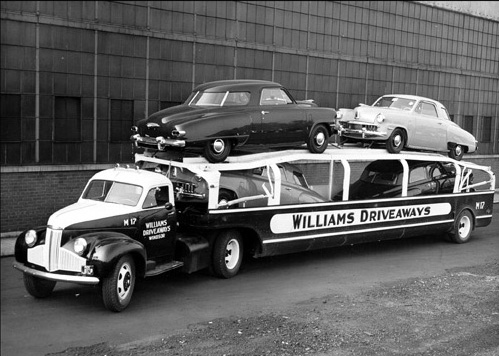
Dealership Bound
For the years to follow the Studebaker assembly plant would be a well know facility, hiring a large number of people from Hamilton and surrounding areas. Not only did the company employ lots of people, but they purchased millions of dollars worth of materials from other manufacturers in order to finish the cars and trucks that continued to roll out the back door. This of course meant more employment. From 1948 production kept a steady but gradual increase. Sales continued to grow into the early 50's as people were hungry for Studebaker's leading and historic styling. Production reached a high when the 1950 Starlight Coupes hit the showrooms. These cars where so radically different with their aircraft styling. From the chrome bullet in the nose to the rounded rear glass these cars were "different by design". In 1953 the design changed again with the low European styling of what would become the famous Hawk line. Sales continued to bode well for the company.
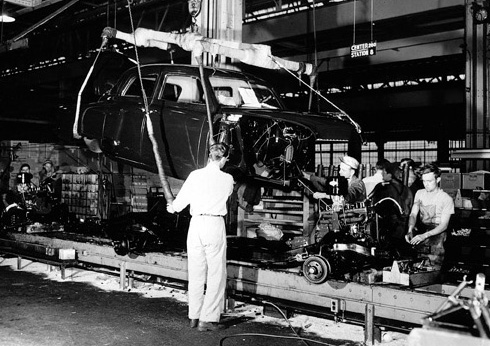
Body Drop 1950
The Hamilton plant was an assembly operation receiving the chassis, drive line components and body panels from South Bend. Most of these parts were shipped by rail to the storage area of the Hamilton operation. In January of 1955 the company name took on a change with the merger of Studebaker and The Packard Motor Co. The name Studebaker Corporation of Canada became Studebaker-Packard of Canada Limited. Throughout the years Studebaker was well respected for leading the way with many avant guard developments. This was very evident when the Lark was introduced in 1959 as a compact car. The Larks were assembled by the thousands in the Hamilton plant. Some truck and Hawk production continued, but the Lark was the mainstay.
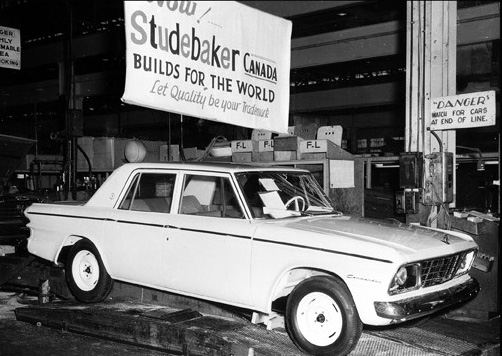
1964 Lark at the End of the Line
When in 1963 notification that the South Bend plant was going to go out of business and shut down, speculation grew about what would happen in Canada. As fate would have it, the Corporation moved their operation headquarters to Hamilton with the goal of continuing production of the Studebaker line. The company was supported with the head office in Hamilton and regional offices in Montreal and Vancouver. Parts depots were located in Montreal, Toronto, Winnipeg, Calgary, Edmonton and Vancouver. This ambitious endeavor did prove somewhat successful. But over the next two years sales declined. With engine production nonexistent in South Bend, the drivelines for the 65 & 66 Larks were purchased from General Motors. The engine, the famous 283ci V8 and the OH 6, was produced by McKinnon Industries located in St. Catharines, Ontario, only a few miles from the Hamilton Plant. Unfortunately, production of the Studebaker automobiles came to an end on March 17, 1966. This icon in the automotive world had finally run its course.
Today, the Hamilton plant still stands. It has been
used for manufacturing of other products over the years, but it will
always be known as the Studebaker Plant. It is currently empty, waiting
for a new owner to once again put life back into it's heart. Oh, and one
more thing... you can still see the name "STUDEBAKER" on the north
side of the building.
Compiled by SDC member Paul Cronkwright, April, 2003
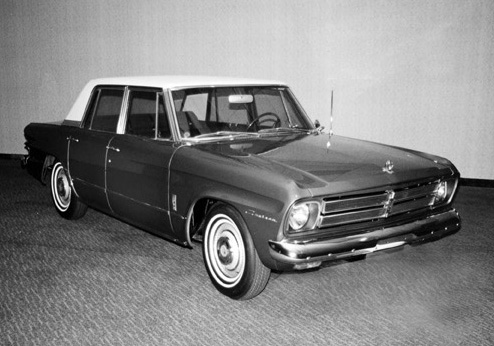
Last 1966 Daytona Built
Now in the Studebaker National Museum South Bend Indiana